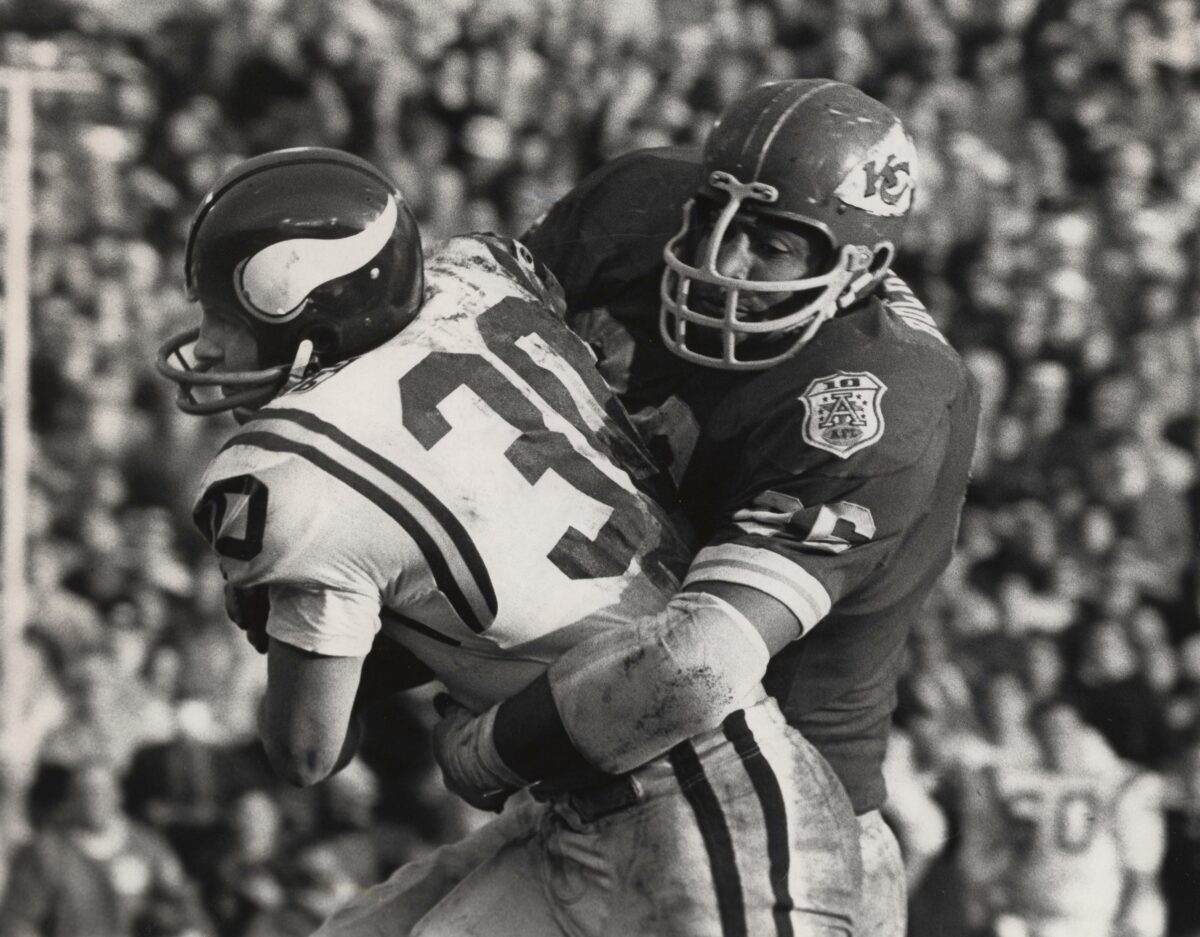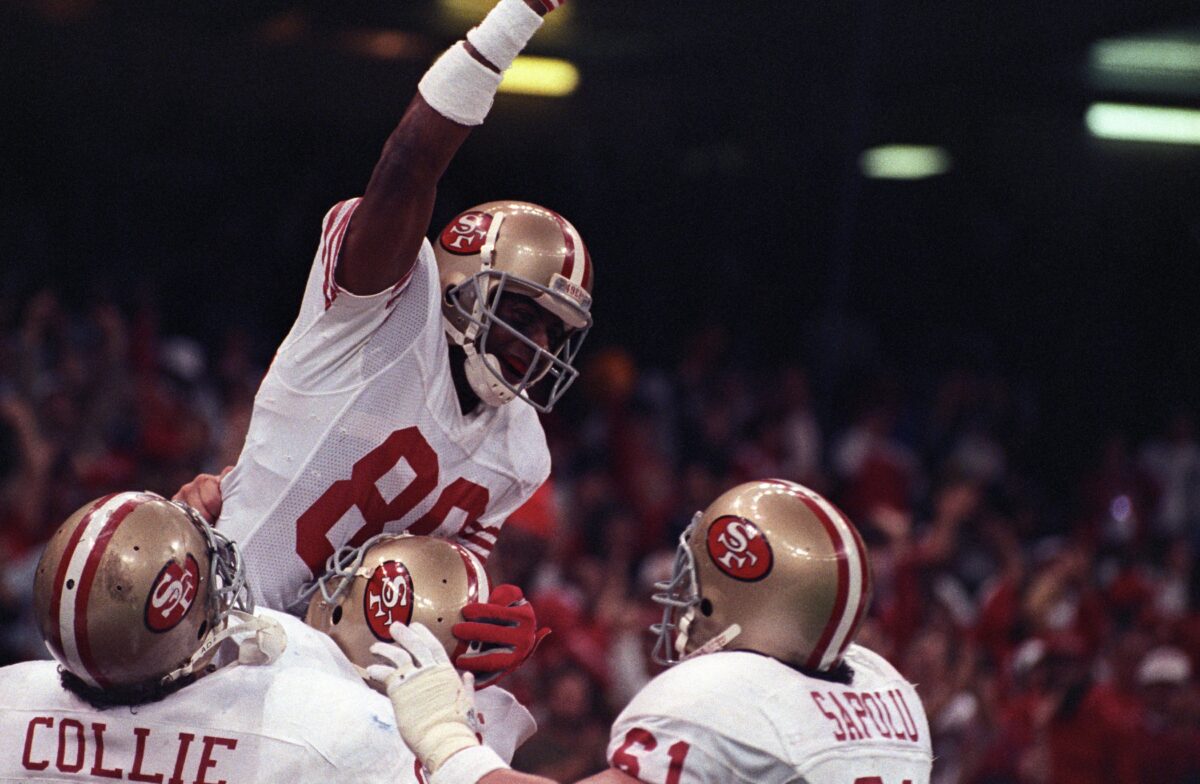Last year, at the end of Black History Month, I put together my list of the 51 best players in pro football history from HBCUs — Historically Black colleges and universities — and while it was an interesting exercise, there were four reasons I wanted to do it again.
First, I wanted to get it done BEFORE the end of Black History Month. While the end of the season and the start of free-agency and draft prep pushed this project to the side, it could also be said that there’s never been a more important and relevant time to feature the contributions that Black players, coaches, and executives have made to the game. You can ask Brian Flores about that.
Brian Flores may have legal precedents with NFL’s long racist history, present misery
Second, there’s one thing I have at my disposal now that I did not have a year ago — Pro Football Reference now has sack totals going back to 1960, which brings a lot of defensive players from Historically Black colleges and universities into sharper focus.
Pro football’s top sack artists from 1960 through 1981
Third, when looking back at last year’s list, there are some guys I just got wrong — players I underrated, and I wanted to correct that.
Finally, the HCBU Legacy Bowl will be played this Saturday, featuring the best HBCU talent right now. Steve Wyche and Bucky Brooks from the NFL Network will be calling the game, and Steve had his own Top 10 — an estimable list that had be re-thinking my own.
So, without further ado, here’s Volume 2 of my 51 greatest players from HBCUs in pro football history.
For a very long time, most major college football programs wanted nothing to do with Black players. Although UCLA boasted a backfield of Kenny Washington, Woody Strode and Jackie Robinson (yes, that Jackie Robinson) in the late 1930s, that was the exception.
In 1959, Alabama was set to play Penn State in the Liberty Bowl. But Alabama’s Board of Trustees threatened to boycott the game because Penn State had an integrated team. As late as 1970, when the Crimson Tide played USC, Alabama’s team had no Black players. Alabama coach Paul “Bear” Bryant had allowed seven Black players to try out in 1967, but none made the team. As Bryant later said, neither the administrators nor the fan base would stand for an integrated team.
Sadly, this was par for the course in certain conferences. Some Southern schools had signed Black players, but even in 1966, although half the schools in the SEC (the Southeastern Conference) and SWC (the now-defunct Southwest Conference) had integrated their student bodies, there still were no Black players in either league. The SWC finally broke its ban when SMU and Baylor began recruiting Black players, but the SEC held out.
That changed after the Alabama-USC game, a 42-21 win for the Trojans in which USC running back Sam Cunningham ran up and down Alabama’s defense, and USC’s long-integrated team beat the daylights out of Bryant’s white team in general. In the end, for competitive reasons alone, those who had blocked Bryant’s calls for integration had to back down.
But before that, in the absence of opportunity at those major programs, Black players in the South found different ways to succeed. HBCUs, some of which had been playing football since the late 19th century, were able to bring in some of the greatest football talent ever seen.
While the major Southern programs insisted on institutional racism, HBCUs were able to recruit and benefit from the talents of athletes such as these:
The all-time leader in career receptions, receiving yards and career touchdowns (Jerry Rice, Mississippi Valley State). The player with the most sacks in a single season (Michael Strahan, Texas Southern). The only man to ever win both a Super Bowl ring and an Olympic gold medal (Bob Hayes, Florida A&M). And the namesake for the NFL’s most prestigious honor (Walter Payton, Jackson State).
Nearly 10 percent of the players in the Pro Football Hall of Fame came from HBCUs, which is an amazing number given the relatively low number of those players who were allowed to break into the NFL after their college successes, given the NFL’s own institutional racism. The NFL banned Black players from 1934 through 1946, and as late as the 1950s, a number of NFL teams wouldn’t even send scouts to HBCUs, even though all teams were well aware of the talent available.
In 1959, Black players accounted for about 12 percent of NFL rosters. What opened the floodgates was the formation of the American Football League in 1960. The new league had no such ban or quota, and its teams signed the best players regardless of color. Still, per historian Charles K. Ross, of the 173 Black players who played in the NFL between 1946 and 1962, only 42 came from historically Black schools. And from 1946 through 1960, no player from an HBCU was selected higher than the fourth round.
In 1963, the AFL’s Kansas City Chiefs became the first professional football team to select a player with the No. 1 overall pick when they drafted defensive lineman Junious “Buck” Buchanan from Grambling State. The NFL did not see fit to select Buchanan until the New York Giants picked him with the 256th overall selection in the 19th round.
As the AFL grew and became fully competitive with the NFL, the older, more established league finally had to realize that its own racism was keeping it from some of the best football talent. It was a long road from that 12 percent to today, when Black players compose over 70 percent of NFL rosters — and goodness knows there’s still a long way to go when it comes to the coaching and administrative sides of things — but it was the HBCUs who held, fostered and perfected so much Hall of Fame talent while the bigger and more established schools turned away players of color. The HBCUs built the bridge Black players needed, and the list of players who competed at those schools because they had no other options is truly transcendent from a talent perspective.
With all that in mind, Touchdown Wire ranks the 51 best players in pro football history who attended historically Black colleges and universities. If you’re not familiar with the history, prepare to be amazed at the names.



